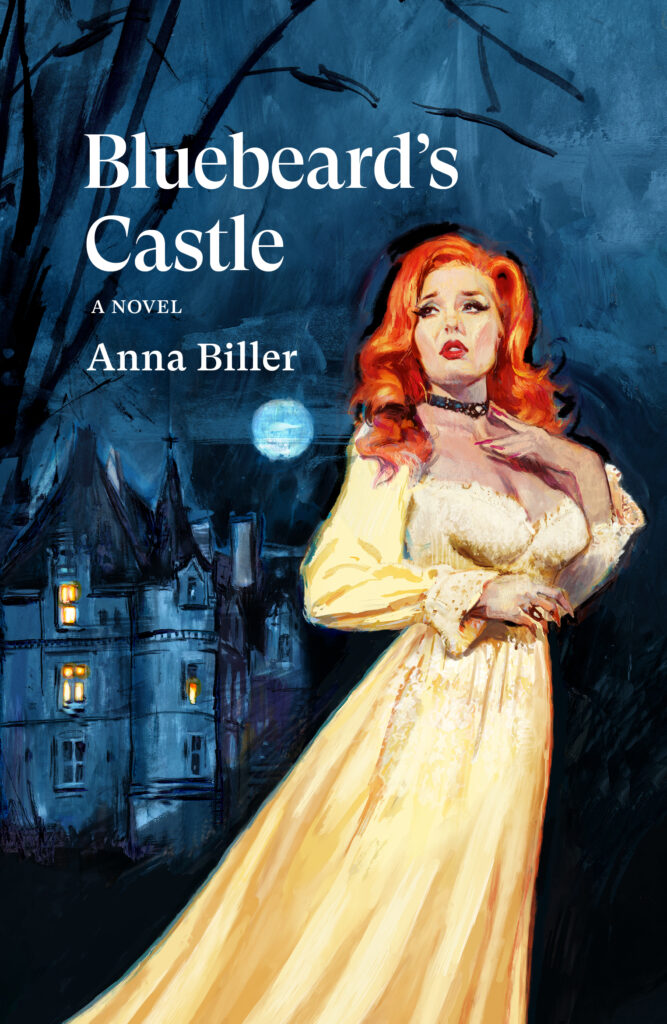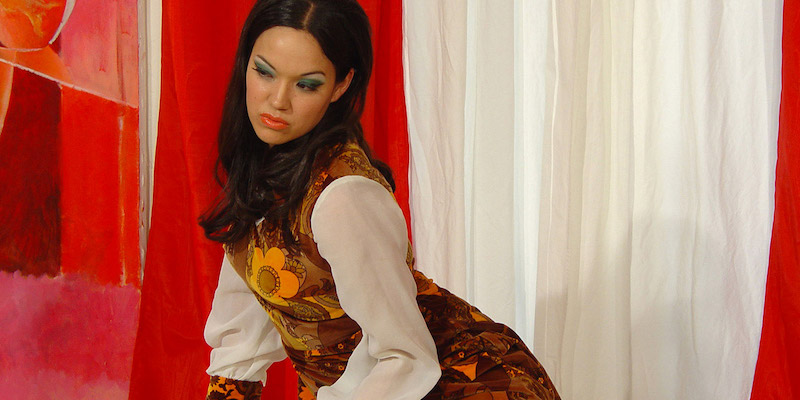Anna Biller, director of The Love Witch, has a new book coming out this October!! We were offered the opportunity to run a cover reveal for the new book, and we also asked her a few questions about the new story, her cult classic, and what she’s reading.
What drew you to the tale of Bluebeard?
When I was coming up for the idea for my next film, I realized that I’m incredibly drawn to classic women’s pictures where a woman has to navigate a terrifying husband or boyfriend, who may be a Bluebeard—movies like Gaslight, Rebecca, Sudden Fear, Rosemary’s Baby. So I wanted to write a movie like that, and the screenplay ended up becoming a novel. Also, “Bluebeard” was one of my favorite fairy tales as a child. It’s a cautionary tale to girls and women that not every rich, attractive man who woos you is going to be a Prince Charming, or even remotely safe, and it’s always felt very real to me. Girls are meeting Bluebeards all the time, and it’s seriously scary.
What are some of the other influences on the novel?
While I was writing the screenplay, the women in peril pictures I mentioned, and mid-century crime fiction featuring female protagonists. While I was editing the novel, Gothic literature such as Jane Eyre, Dracula, Frankenstein, Rebecca, Wuthering Heights; different literary iterations of the “Bluebeard” tale, especially Angela Carter’s The Bloody Chamber and Other Stories; and female writers such as Sylvia Plath, Virginia Woolf, Shirley Jackson, and Jean Rhys.

Your visual style is so distinct. How did it come into play in writing fiction?
The novel is full of the types of lavish costumes and settings I use in my films, so I think it’s easy to visualize it as you read it, almost as if you’re watching a movie. But it’s also very psychological and thematic.
Horror is having a moment. What is it that makes horror feel so relevant to the modern experience?
People are more alone than they ever have been. Online communities are not the same as in-person communities, and we’ve lost a lot of the human connections we used to have. There’s a lot of confusion and aggression and poverty and loneliness and addiction and emptiness and despair, and other people are monsters. Horror is a good way to sublimate all of that into fantasy.
What makes gothic fiction and horror so perfect for exploring women’s stories?
I feel that being a woman exposes one to multiple daily horrors that most men could never dream of, unless they have had an unusually rough life or have been to war. Men often write horror stories about home invaders or supernatural monsters or aliens, none of which actually plague them in real life, whereas for women, the monster is often right in the house. This is why Bluebeard in particular interests me—because it’s about the monster and the man you love being one and the same person. So for a woman, just living one’s life can be like living in a Gothic horror novel. We’re also more sensitive to emotional pain, so we make better spirit mediums; and of course, we’re witches.
The Love Witch is a modern cult classic. What do you think allowed the film to resonate so well with audiences?
I think perhaps it was the combination of an iconic anti-heroine, a meaningful theme, a realistic depiction of modern witches, and dramatic visuals and score.
What’s on your nightstand/what are you reading next?
Midnight’s Children, Journey to the End of the Night, Lost Illusions, The Essex Serpent, Divine Comedy, My Sweet Audrina, Mr. Fox.

















